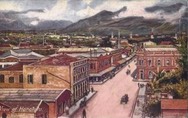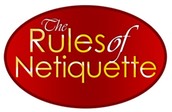Database of Hawaiian Quilts: Bishop Museum
The evolution of the Hawaiian Quilt from the techniques learned from the Missionary ladies to mid-1800 when the gorgeous Hawaiian quilts were presented to Prince Albert at his birth lies in how the Hawaiians perceived and interacted with the world around them. The Hawaiian Quilt was and is the artistic recreation of everything Hawaiians cherished, their old religion of many kapu, their old culture of beautiful meles and hula and their artistry that went into making everything they used.
Up until the discovery of Hawaii by Captain James Cook in 1778, the Hawaiians made everything they used. They had no metal so they used stones, shells, hardwood to carve koa bowls, beat the inner bark of the paper mulberry tree into bark cloth called tapa, hallow out tree trunks for canoes, make fishhooks and fishnets to catch their fish, spears, and paint designs with bird, fish bones or sharpened twigs, etc.
The kapu system, a religious law system, ruled over almost every aspect of the Hawaiian life. It included thousands of rules which told the people what they could and could not do. The kapu system was based on beliefs about mana (spiritual power.)1
The Hawaiians believed that anything associated with the gods had mana. They believed that the kapu were made by the gods and interpreted by the ali’i and the kahuna who were also required to observe the kapu. The ali’i were descendants of the gods and had plenty of mana. There were strict kapus placed on all the personal items of the ali’i. No one was allowed to touch the clothing or anything else that the ali’i had touched except for the kaukauali’i (lesser chiefs) who were assigned to the care of his belongings and personal items. A loss of mana would occur if anyone of lesser rank would come in contact with the Ali’i’s personal items.
There were kapu about everything in Hawaiian life. For example, women were not allowed to eat certain kinds of foods like pork, banana, coconut and certain kinds of fishes. Food for men and women had to be cooked in separate imu (underground ovens). Men and women ate separately.
Penalties were severe for breaking kapu. The law officer (‘ilamuku) hunted down kapu breakers and saw to it that they were put to death by strangulation, clubbing, stoning, burning, or drowning. There was no trial, no probation, no compassion. Often, guilty kapu breakers caused their own death before the ‘ilamuku got to them. They knew that the gods were tremendously powerful and this affected their thinking.
There was one place of safety to keep the kapu system from being overly demanding. The pu’uhonua (place of refuge and forgiveness) was established in each moku (district). If a kapu breaker was able to reach the pu’uhonua ahead of those seeking to kill him or her, the kahuna would then provide shelter, protection, and forgiveness. The kapu breaker could then reenter the community in safety. The gods would have been satisfied through the prayers and rituals of the kahuna.
The purpose of the kapu system was to keep the power of the ali’i and kahuna over the people. The people believed that breaking the kapu would bring the anger of the gods on themselves and their community.
The explorers, trades people, adventures, and missionaries who followed the discovery of Hawaii by Captain Cook in 1778 brought western produced goods that replaced the Hawaiian made goods. There was no need to carve koa bowls, canoes, gods, beat tapa or weave lauhala matsI The ancient artistry of making Hawaiian goods was lost.
In Nov 1819 by King Kamehameha II (Liholiho) with the encouragement of his mother Keopuolani and his father’s wife, Kaahumanu broke the kapu system by inviting the leading chiefs and several foreigners to a feast. Two tables were set up, one for the men and another for the women.
After all the guests had begun to eat, Liholiho suddenly sat down at the womenʻs table and began to eat. The guests clapped their hands and shouted “Ai noa,” meaning free eating or the eating kapu is broken.
After the meal, Liholiho ordered the heiau destroyed and the idols burned. The kapu system, the entire social system of how people were expected to behave, was ended.2
In 1830, Kaahumanu after being accepted into the church forbade public performance of the hula. The Protestant missionaries arriving in 1820 believed hula dangerously promoted old heathen beliefs and celebrated physical enjoyment. The missionaries made a strong effort to eradicate hula.3
Hula was an intricate part of the Hawaiian religion. All hula was preceded and followed by prayers, and many of the most popular dances told stories of godly adventures. The pule kuahu or prayer offerings were rich in poetic imagery as the mele that accompanied the dance because it was hoped that the dancers would be beneficiaries of godly inspiration.4
With their religion, their culture and their heritage abolished within a very short period of time, the Hawaiians needed to fill the void. Of course the Missionaries brought Christianity, but what was to replace their belief system?
The Missionary women taught the Hawaiian women how to quilt in the Western method.5 In old Hawaii, the Hawaiians had made tapa moe, Thin sheets of the inner bark of the paper mulberry tree pounded together with wooden mallets to form larger, thicker, stronger pieces of bark cloth. These sheets were joined at one end and “quilted” with long, loose stitches. The top most sheet was usually colored or decorated.6 The Western patchwork quilting offered no meaning to the Hawaiian women.
The Hawaiians had a reason and purpose in everything they did. To give meaning to their quilts, the designs of the Hawaiian quilt began to reflect their creativeness to incorporate the culture, legends, religion, heritage and life of their ancestors or kupuna. It documented the beauty of the land and the heritage of their legends. Designs took the form of flowers, trees, animals, and artifacts to protest changes and to reflect their everyday life and dreams.7
Designs were fashioned to document certain events in Hawai’i history. The Hawaiian quilt soon became a visible emblem of a Hawaiian family line. To steal someone else’s design was believed to also take part of the spirit of the designer and quilter.8
The old Hawaiians believed that Hawai’i was the center of Mother Earth; Hawai’i was the gateway to the spiritual world; Hawai’i was the source of all the love and compassion in the world. Without a center, peace, love, and hope was unattainable.9
The center of the quilt represented mother earth and the center of oneʻs self or the quilter. The Hawaiians believed in the physical and spiritual world. The ancestors believed that they could easily enter the spitirual world to confer with their gods and ancestors and return to the physical world unharmed. The Hawaiian women created open centers on some of their quilts to represent the gateway to the spiritual world.10
Solid center depicted the core of the family, the center of oneʻs life. It represented the source, strength and the roots of the family and individual.11
The lei or border represented the lands outside of Hawai’i. It was considered the lands visited by the Hawaiians and conquered with love. The lei also represented oneʻs love being returned to its center. The continuous border or lei also represented the circle of life, never ending and continuous even after death.12
“A retainer of Queen Emma and King Kamehameha IV confirmed that the design form we recognize as the traditional Hawaiian quilt developed mid-century. She noted that women in the Kingdom of Hawai’i began making their finest quilts to celebrate the birth of Prince Albert in 1858. The Prince was given a stunning array of quilts.”13
According to Linda Boynton Arthur, “Other” Hawaiian Quilts were the Hawaiian Flag quilts, Embroidered Hawaiian quilts, Crazy quilts, Kapa Pohopoho (Patchwork) quilts, and Local Style Hawaiian quilts.14
The Hawaiian Flag quilts were very symbolic. The first Hawaiian flag quilt originated in 1843 when the Hawaiian Islands were briefly under British control. It was called “Ku’u Hae Aloha” meaning “Lost Beloved Flag” or “My Beloved Flag”. None of the early Hawaiian flag quilts have survived for two reasons. Environmentally textiles in the tropics do very poorly. The second reason was that because the quilts were believed to contain the mana of the quilt maker, many quilt makers left instructions for the quilts to be burned when they died.
The second coming of the Hawaiian flag quilt was at the end of the Victorian era (1890s) when the Hawaiian kingdom was overthrown in 1893 and the annexation of Hawaii to the United States in 1898. Following the overthrow a great wave of patriotism filled the hearts of the Hawaiians.
Inspired by the American Centennial Exhibition in Philadelphia in 1876, needlework from the Decorative Arts Movement captured the attention of ladies. Embroidered quilts, both in crazy quilts and redwork became popular in Hawai’i.
Patchwork quilts (kapa pohopoho) was introduced in 1820 by the missionary women. In the early twentieth century pohopoho quits made as thin coverlets (kihei pili) were made for everyday use.
Local style Hawaiian quilts do not use a repeated Hawaiian pattern, but does depict and island theme or some element of Hawaiian culture. Most fall into the category of kapa pili which have been used in Hawaii for a long time. It is pieced quilt with a sheet or flannel backing. It has no batting and is used as a bedcovering. When the children were born it is likely that their mother or grandmother started a kapa ‘āpana (applique design quilt) that would be given to them when they go away to school or get married.
__________________________
Footnote:
1Hawaiian Antiquities, David Malo, Bishop Museum Special Publication 2, 2d Edition, Bishop Museum Press, 1951
2 The Hawaiian Kingdom, 1778-1884, Foundation and Transformation, Ralph S. Kuykendall, The University Press of Hawaii, 1957, pp66-68
3 http://www.hawaiihistory.org/index.cfm?fuseaction=ig.page&CategoryID=253
4 The Art of the Hula, Allan Seiden, Island Heritage Publishing, 2001, pp12-55
5 The Hawaiian Quilt, A Unique American Art Form, Linda Boynton Arthur, PhD, Island Heritage Publishing, 7th printing 2016, p15
6 Hawaiian Quilt Masterpieces, Robert Shaw, Universe Publishing, 2009, p11
7 The Hawaiian Quilt, A Spiritual Experience, by Poakalani and John Serrao, Mutual Publishing 1997, p9
8 ibid, pp11-12
9 ibid, p15
10 ibid, p17
11 ibid, p19
12 ibid, p22
13 The Hawaiian Quilt, A Unique American Art Form, Linda Boynton Arthur, PhD, Island Heritage Publishing, 7th printing 2016, p21
14 ibid, pp80-89
—————————————— Published Nov 2016 ——————————————


